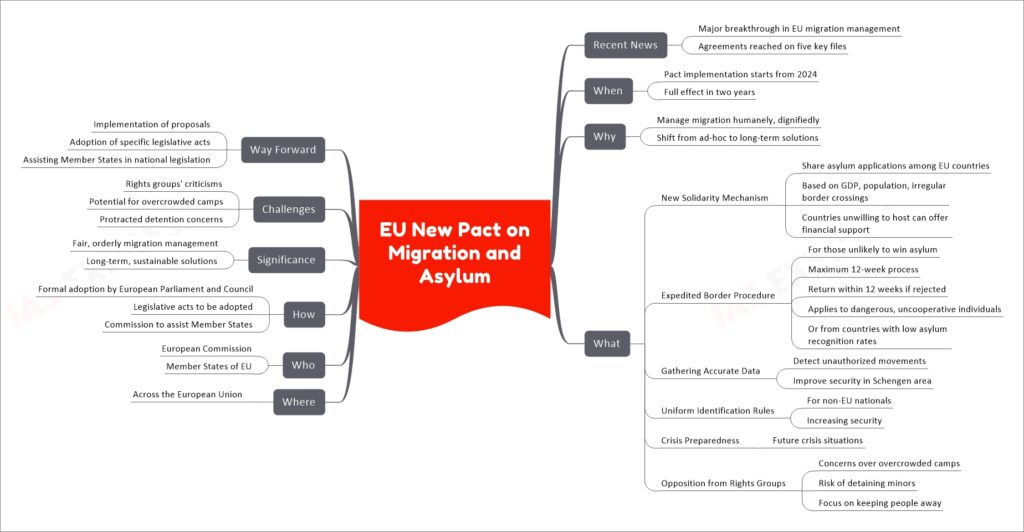EU New Pact on Migration and Asylum

The EU’s New Pact on Migration and Asylum, agreed upon in 2023, marks a significant advancement in the European Union’s approach to managing migration. The pact encompasses several key provisions aimed at establishing a more humane, dignified, and effective system. These include a new solidarity mechanism for sharing asylum applications among EU countries based on various criteria, an expedited border procedure for processing and potentially returning individuals unlikely to win asylum, measures for gathering more accurate data to detect unauthorized movements, the creation of uniform rules for the identification of non-EU nationals to enhance security within the Schengen area, and preparedness for future crisis situations.
Despite these measures, the pact has faced criticism from rights groups concerned about the potential for overcrowded migration camps and the protracted detention of minors. The implementation of the pact, starting from 2024 and expected to take full effect within two years, will involve the formal adoption of these proposals by the European Parliament and Council, followed by the adoption of specific legislative acts. The European Commission will assist member states in implementing the new rules in their national legislation, moving towards long-term and sustainable solutions for migration management in the EU.

